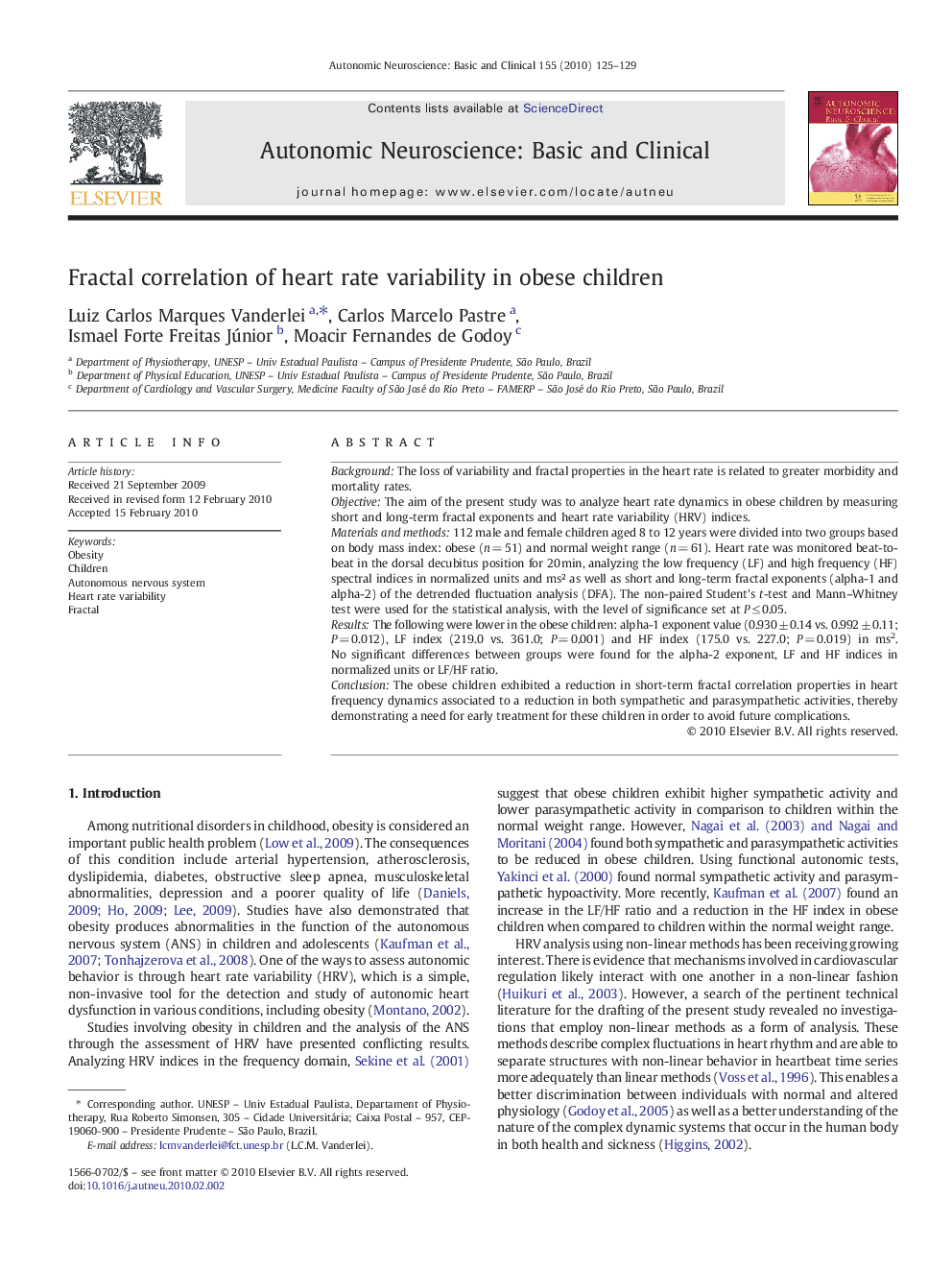| Article ID | Journal | Published Year | Pages | File Type |
|---|---|---|---|---|
| 3035130 | Autonomic Neuroscience | 2010 | 5 Pages |
BackgroundThe loss of variability and fractal properties in the heart rate is related to greater morbidity and mortality rates.ObjectiveThe aim of the present study was to analyze heart rate dynamics in obese children by measuring short and long-term fractal exponents and heart rate variability (HRV) indices.Materials and methods112 male and female children aged 8 to 12 years were divided into two groups based on body mass index: obese (n = 51) and normal weight range (n = 61). Heart rate was monitored beat-to-beat in the dorsal decubitus position for 20 min, analyzing the low frequency (LF) and high frequency (HF) spectral indices in normalized units and ms² as well as short and long-term fractal exponents (alpha-1 and alpha-2) of the detrended fluctuation analysis (DFA). The non-paired Student's t-test and Mann–Whitney test were used for the statistical analysis, with the level of significance set at P ≤ 0.05.ResultsThe following were lower in the obese children: alpha-1 exponent value (0.930 ± 0.14 vs. 0.992 ± 0.11; P = 0.012), LF index (219.0 vs. 361.0; P = 0.001) and HF index (175.0 vs. 227.0; P = 0.019) in ms2. No significant differences between groups were found for the alpha-2 exponent, LF and HF indices in normalized units or LF/HF ratio.ConclusionThe obese children exhibited a reduction in short-term fractal correlation properties in heart frequency dynamics associated to a reduction in both sympathetic and parasympathetic activities, thereby demonstrating a need for early treatment for these children in order to avoid future complications.
